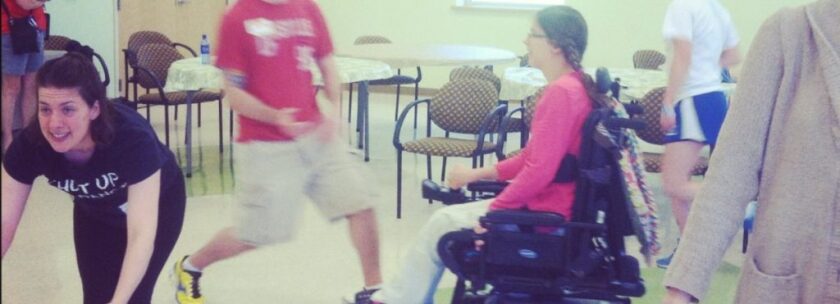
Theatre is a great place for diverse bodies and minds- it’s all about different stories and differences are interesting! For those of us who want to assemble a diverse cast and crew, it can be intimidating to welcome everyone in- mainly because we don’t want to accidentally offend someone by using the wrong words, or by not providing the correct accommodations. It has never been easier to be inclusive, though, and after sitting down with Talleri McRae, I have never been more motivated to create an inclusive theatre environment, both on and off the stage. For those who want just a quick peek into her wisdom, I assembled five of the top tips I pulled out of the interview, although I highly suggest going through the whole thing.
The tips below are geared towards how to be inclusive on the stage, but they are easily translated to other activities.
- Don’t be afraid to try, and fail gloriously, and then try again. You are going to say things wrong, you are going to make a gaff, someone’s feelings might be hurt, but you’ve got to keep trying.
- Prepare beforehand with parents and children. If the child might have a meltdown or need a break, talk to the parents about how to best help them, and give an example of how you might explain it to the rest of the class. That way, if a meltdown does happen you can tell the parents, “I had to give the speech today, but we all got through it just fine.”
- State the values of the group you are working with at the very beginning of the project. For example, if you are working on a theatre project with a bunch of children you can say, “We really value difference and everybody is going to use their brain and their body in a different way, and that’s OK. We’re all going to get what we need and maybe somebody is going to need something in this group that’s different than what you get, and that’s OK.”
- Don’t be afraid to privately and kindly say what’s in the room. It can be frustrating for kids (and adults) to work together even if no one has a diagnosed neurodiversity! Just call out the elephants in the room. Talleri gives a great example from her time up in a summer camp where she had a camper in her group who was neurodiverse, and it was causing some contention with the other people in the show they were trying to put on. She pulled some of the annoyed campers aside and said, “Hey, I can tell that this is annoying. It’s OK that you’re annoyed, you’re not a bad person that you’re annoyed by this. You know we’re trying our best as a group to support this individual, but a lot of that’s on me because I’m the grownup and I’m the teacher, so I’m going to give you the chance to take a break as well if you need it. You have that option because you don’t have to sit here at rehearsal and be annoyed the whole time. This person is going to be part of the show. It’s gonna happen. But if this person does something different or weird it’s not going to distract from your performance, the audience isn’t going to blame you. It will be what it will be. But for the remainder of his rehearsals I’m giving you the option if you need a break you can take one too. You don’t have to just endure and then feel like a bad person.” She found that just stating the obvious eased the tensions and that the other campers were much more at ease for the rest of the rehearsal process.
- Make it ridiculously clear that everyone is welcome. You will have to state this more times than you think. Not only those with disabilities need this message, children who are cripplingly shy or who have had an awkward experience in the past need this message too.


